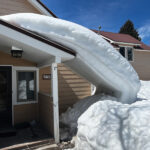
After years of suffering through the worst housing recession in history-worse than during the great depression-everyone in the housing sector from real estate agents to contractors to building product manufacturers was excited about the growth of the industry in 2013. The International Builders Show in Las Vegas in January was a beehive of excitement.
But the blossom has wilted a bit in the first quarter of 2014. A recovery that only just last year could be characterized as strong has become tepid and worries among sector participants have grown. Some analysts look at an exceptionally brutal winter that saw nearly one-third of the nation covered in snow and temperatures that threatened frostbite, even during a quick trip to collect the paper in the morning.
Following are three main indicators of the construction market: existing homes sales, new homes sales and a remodeling market index.
Existing Homes Sales
(Click on image to enlarge)
 After a robust year in 2013, the winter weather cooled existing homes sales. After all, who wants to look at homes when all you really want is to prop your feet up in front of the fire and listen to the wind howl. The National Association of Realtors reported the annualized rate for existing home sales increased slightly in April to 4.65 million homes. That’s up over the previous three months by just a smidge, but well below any single month in 2013.
After a robust year in 2013, the winter weather cooled existing homes sales. After all, who wants to look at homes when all you really want is to prop your feet up in front of the fire and listen to the wind howl. The National Association of Realtors reported the annualized rate for existing home sales increased slightly in April to 4.65 million homes. That’s up over the previous three months by just a smidge, but well below any single month in 2013.
Existing homes sales are especially important to track because, as the Harvard Joint Center for Housing Studies Remodeling Futures program has reported, the busiest period for home improvement expenditures is within the first 18 months of home purchase. No other time frame has the same level of activity.
New Homes Sales
(Click on image to enlarge)
 The National Association of Homes Builders/Wells Fargo Housing Market Index tracks what is happening on the front lines of home construction with builders, and represents both the actual activity and builder sentiment.
The National Association of Homes Builders/Wells Fargo Housing Market Index tracks what is happening on the front lines of home construction with builders, and represents both the actual activity and builder sentiment.
The first four months of 2014 show a flat line in builder confidence that indicates a waiting period. Builders were bullish in 2013, but now they are waiting and seeing if job growth and increased consumer confidence will translate to increased new homes sales.
At the same time, anecdotal evidence suggests that the last year pressed builders on their ability to ramp up and deliver homes on time. The slow down gutted both builder and trade contractor staffs making it difficult to get skilled labor. Perhaps a quiet period will allow for some retrenching, and position the builders and the market for accelerated growth.
Remodeling Market Index
(Click on image to enlarge)
 The National Association of Home Builders Remodeling Market Index presents an even clearer portrait of the effects of cold weather on construction. After a long increase in remodeling activity, the last two quarters show a significant decline. This occurs in both the overall market index and the major additions and alterations, which includes roof replacement over
The National Association of Home Builders Remodeling Market Index presents an even clearer portrait of the effects of cold weather on construction. After a long increase in remodeling activity, the last two quarters show a significant decline. This occurs in both the overall market index and the major additions and alterations, which includes roof replacement over
$25,000. (Minor additions and alterations-under $25,000-is not shown here because it tracks almost exactly with the overall index.)
Smaller jobs show greater strength than larger ones, which would make sense in times of uncertainty. Homeowners will replace the roof, but they are less likely to spend for all the bells and whistles.






